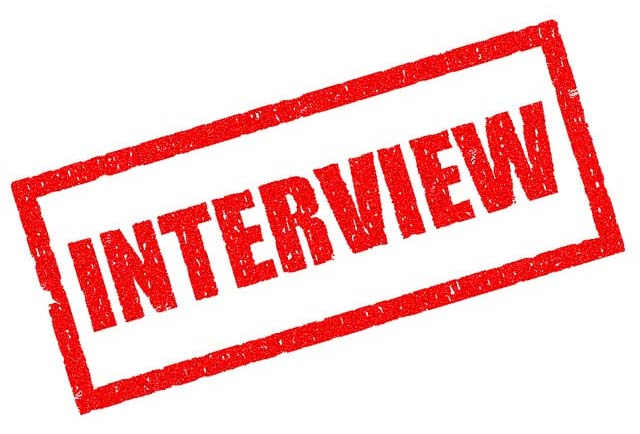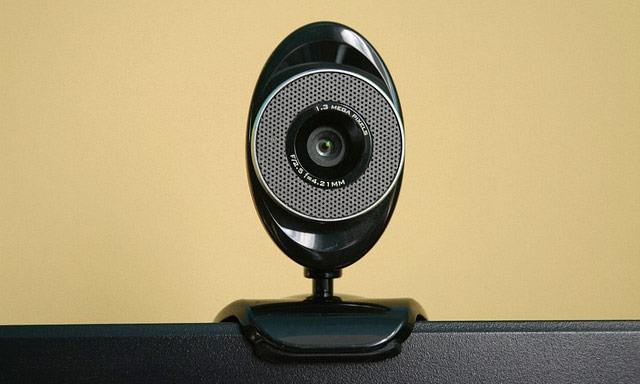Are you a podcaster looking to expand your audience? If so, have you considered adding video to your audio podcast?
By turning your regular audio podcast into a visual one, you can appeal to a much wider audience and grow your listenership.
In this post, we’ll cover everything you need to know to create a video podcast, including what a video podcast is, what you should consider before starting one, different video podcast formats you can choose from, and step-by-step instructions to create a great video podcast.
Let’s begin!
Disclosure: Although I receive affiliate compensation at no additional cost to you to support this site that compensation in no way influences my recommendations, which are strictly informed by my 10+ years of online business experience consulting for clients large and small. My aim is to always recommend tools that offer the best return for your investment (for more details, read my Affiliate Disclosure).
What Is a Video Podcast?
A video podcast is a type of podcast format that combines audio content with video, typically featuring a video recording of the podcast host or guests while they talk.
The advantages of this format are many. Video can provide additional context to your audio content, for example, by showcasing visual aids or demonstrations.
You could post your video podcast on YouTube, instantly giving you access to a platform with one billion unique monthly users.
Your entire podcast or clips from it can be easily shared on social media, providing even more opportunities for people to discover and engage with your content.
Also, video podcasts are easier to monetize than audio podcasts via sponsorships, advertising, or merchandise sales. Shows that attract a sizable and engaged audience are very attractive to advertisers looking to reach a specific demographic.
Overall, a video podcast can be an excellent way to expand the reach and engagement of your show by providing a more immersive and visually appealing experience for your audience.
What Should You Consider Before Starting a Video Podcast?
Before you work on your video podcast, there are a few things you’ll need to take into account.
First, you'll need to consider your target audience. Are they likely to engage with video content or would they rather listen to an audio-only podcast (say, a big chunk of your audience is made up of long-haul truck drivers.)
Second, you'll need to choose a video setup that works well for your content. For example, if your podcast is interview based, you'll need to allow for multiple camera angles or split-screen views, which require somehow more sophisticated video editing.
Last, you'll need to decide on the format that would work best for your video podcast (more below.)
8 Popular Video Podcast Formats

Depending on your requirements, you’ll likely end up choosing from one of the following eight popular video podcast formats:
1. Static image format
This format is the easiest to implement on the cheap. All you have to do is to add a static image to your audio podcast that’ll be on display throughout the entire duration of your episode.
Why use such a basic format? Because it’s the quickest way to post your podcast on YouTube and other video-sharing sites if you don’t have access to video equipment.
Now, while this format won’t provide any visual variety to your audience, it's still something to consider if you want to begin ranking your content on YouTube as soon as your audio podcast becomes available.
2. Talking heads format
This format is the most commonly used video podcasting format, where both host and guest are shown speaking directly into the camera in a remote interview-type setting.
The talking heads format is the easiest to set up because you’re taking advantage of the webcams and mics that are built into laptops, so you won’t require expensive video and sound equipment.
3. In-studio recording
This is similar to the talking heads format, except your video podcast is recorded in a professional studio with a live guest — note that this will demand a much higher investment of equipment and manpower.
This format is typically chosen by established podcasters with a large following (and lots of resources) to create a high-quality video podcast with excellent lighting and sound quality, which is typically a requirement from the podcast networks they belong to.
4. Footage and audio
The footage and audio format involves recording footage of events or locations while adding the podcast audio track to the video.
This format is widely used by host-only podcasts, where solo hosts explain a subject while showing video footage that supports their narrative — for example, a scientific podcast explaining a new discovery, a travel podcast showing exotic locations, a video game review podcast, etc.
5. Remote interview

The remote interview format is a popular format for podcasts with guests who are located in different places.
Unlike the talking heads format, where video is recorded inexpensively through your computer with the help of a video conferencing app like Zoom, Skype, or Google Meet, the remote interview involves dispatching of full camera crew to the guest’s location.
This format allows you to have a high-quality visual of the remote guest with multiple camera angles, high-quality sound, and proper lighting, but it’ll likely be cost-prohibitive if you’re a beginner.
6. Interview and b-roll
The interview and b-roll format is similar to the remote interview or talking-head formats, but with the addition of b-roll footage. B-roll is supplementary footage that’s used to provide context or add visual interest to the interview.
This format can be used to make your podcast video more interesting for your audience by sporadically cutting to footage of what’s being talked about in the interview.
7. Live streaming
The live streaming format involves broadcasting your podcast live to your audience. This format is ideal for established podcasts that have a strong following and can be used to engage with an audience when simulcasting live events.
Some examples include live-podcasting the quarterly investor meeting of an important public company for a financial channel, doing live commentary before, during, and after a rocket launch, live-podcasting a political event, etc.
8. Animation and b-roll
The animation and b-roll format involves combining animation and b-roll footage with podcast audio to create an engaging video.
This format is great for podcasts that cover complex or technical topics that benefit from visual aids.
It's also a great format for podcasts in the world of entertainment and comedy where, for example, the narrative may be enhanced with cartoons.
In short, take some time to experiment with different formats and find what works best for your show and your audience.
With a little bit of creativity and some essential equipment, you can take your audio podcast to the next level by enhancing your engagement and reach.
How to Create a Video Podcast in Nine Steps?

Now that you know the different video podcast formats, let's go over the steps required to create your own:
1. Choose your video podcasting equipment
Depending on your video podcast format of choice, you may need to invest in some additional equipment beyond your laptop or mobile device.
This includes video, sound and lighting equipment. Having said that, if you're just starting out, don't spend a lot of money on high-end gear.
You should instead aim for decent quality entry-level equipment that’ll produce good audio and video quality. Here are the basics:
Camera: Although some smartphones have excellent cameras, you’ll find that a stand-alone mid-range HD webcam will give you more flexibility and better results.
Microphone: A high-quality microphone is essential to record clear audio. Smartphones and laptops use tiny microphones that won’t sound professional in a podcast.
Instead, you need to look for a mid-range condenser studio mic, or a good quality dynamic mic.
Although these external microphones used to cost a small fortune a decade ago (sometimes over a thousand dollars,) you can now find excellent condenser mics on the market for between $100-$200.
Mic stand: A good mic stand with a shock mount is necessary to keep your microphone steady and isolate it from any ambient vibration.
Lighting: Good lighting will make a significant difference to the quality of your video. You can get excellent adjustable LED lighting rings these days for under $100.
2. Decide what video podcast format you’ll be recording
As mentioned earlier, there are several types of video podcast formats to choose from. You'll need to do some testing and decide ahead of time which format you’ll need to adopt based on your requirements.
Your goal is to make a selection that’ll add value to your audio podcast and not be a distraction, so you can create engaging episodes that resonate with your audience.
3. Plan your episode
Once you've decided on your format, you'll need to plan out your episode. On the logistical side, this includes selecting your guests (if any,) creating an outline or script for your podcast episode, deciding on its length, and figuring out what visuals you'll need to support your content.
On the technical side, this includes acquiring the required recording and editing equipment, setting it up, and doing a technical dry run to ensure everything is working properly.
It's important to plan out your episode ahead of time so you have no nasty surprises on recording day, especially if you're interviewing a guest!
4. Record your episode

With your equipment and plan in place, you're ready to start recording your episode. Make sure your lighting and audio are set up correctly and do a test recording before going live.
During the taping, speak clearly and confidently, and if you’re doing a solo podcast or a remote interview, make sure to maintain good eye contact with the camera at all times.
5. Edit your episode
Once you've recorded your episode, it's time to edit it. This includes trimming the video, adding any necessary visual or audio effects, and mastering the audio.
Editing your episode can be a time-consuming and tedious process, especially on multi-hour shows, so be patient, take breaks, and start editing as soon as you finish recording so you don’t have to go on a mad rush to meet a last-minute publishing deadline.
6. Create a video thumbnail
Your video thumbnail is the first thing that viewers will see when they come across your video on YouTube or other video-sharing platforms.
So, it's important to create an eye-catching and relevant thumbnail that accurately represents your episode's content. You can use tools like Canva, Visme, or PlaceIt to create your thumbnail.
7. Select a podcast hosting platform
Once your video is edited and ready to go, you'll need to select a podcast hosting platform to upload your episode to. Some popular options include Buzzsprout, Libsyn, and Podbean.
The vast majority of platforms are paid, so make sure to choose a cost-effective plan that meets your needs right now in terms of storage, analytics, and pricing, but that can also support your growth moving forward via upgrades.
8. Upload your podcast episode
With your podcast hosting platform in place, it’s time to upload your episode. Make sure to add a title, description, and relevant keywords about your topic to help viewers find your video, plus artwork for your show and a thumbnail for your episode.
9. Get the word out
Now, it’s time to promote your video podcast to the world! Once your episode is uploaded, make sure it’s widely distributed to popular podcast listening apps like Apple Podcasts, Spotify and so on (your hosting platform will facilitate the process.)
Also share your video on social media, your website, and other relevant channels and encourage your viewers to like, comment, and subscribe to help grow your channel.
Remember to engage with your viewers and respond to any comments or feedback you receive.
In Conclusion
Video podcasting is an exciting way to grow your podcast audience and connect with people who prefer video content.
With the growing popularity of YouTube and the increasing demand for visual content, turning your regular audio podcast into a video podcast is a smart move.
With a bit of planning, practice, and some essential equipment, you’ll be able to create a compelling video podcast that appeals to your audience and helps grow your podcasting business.







